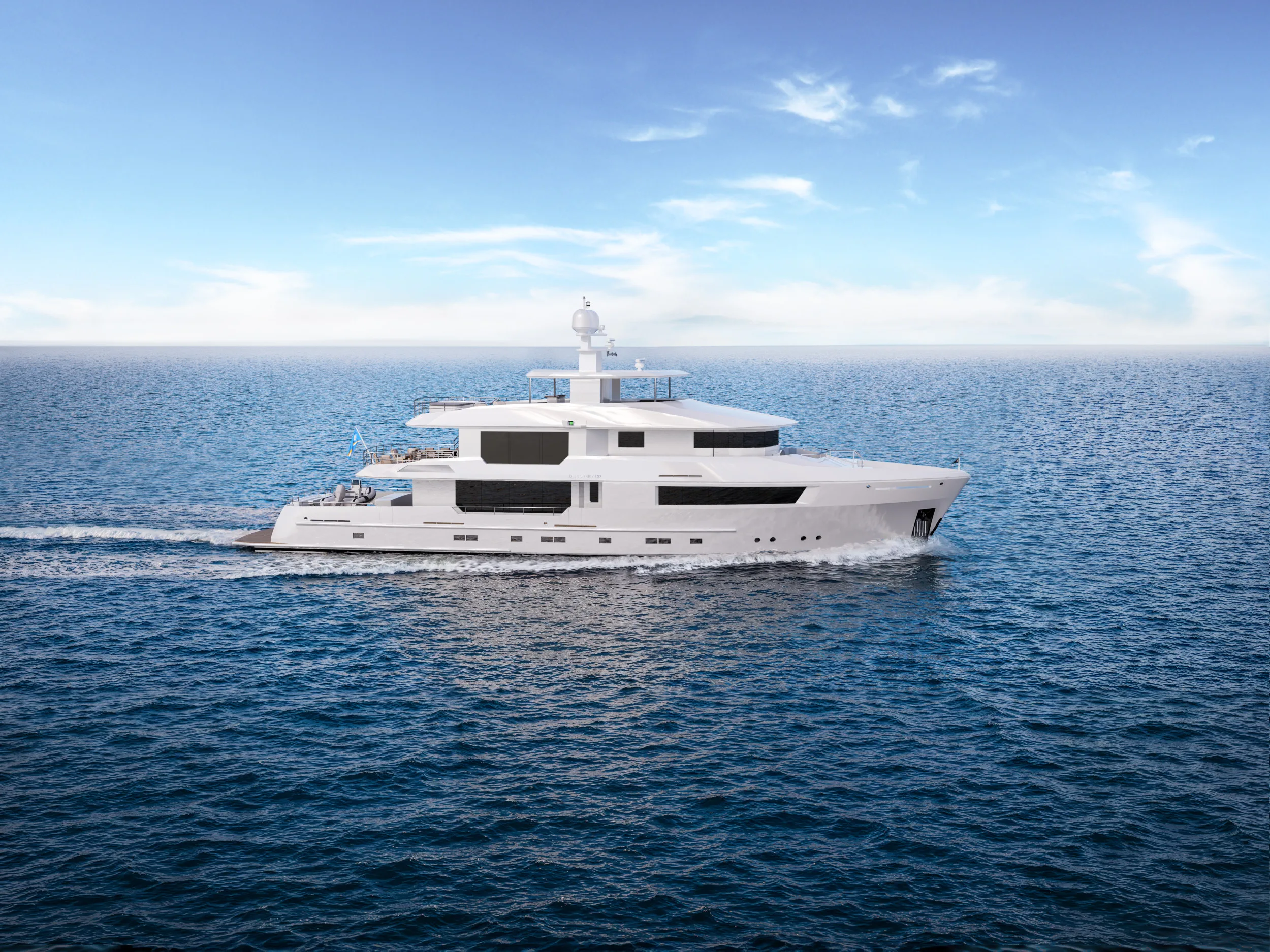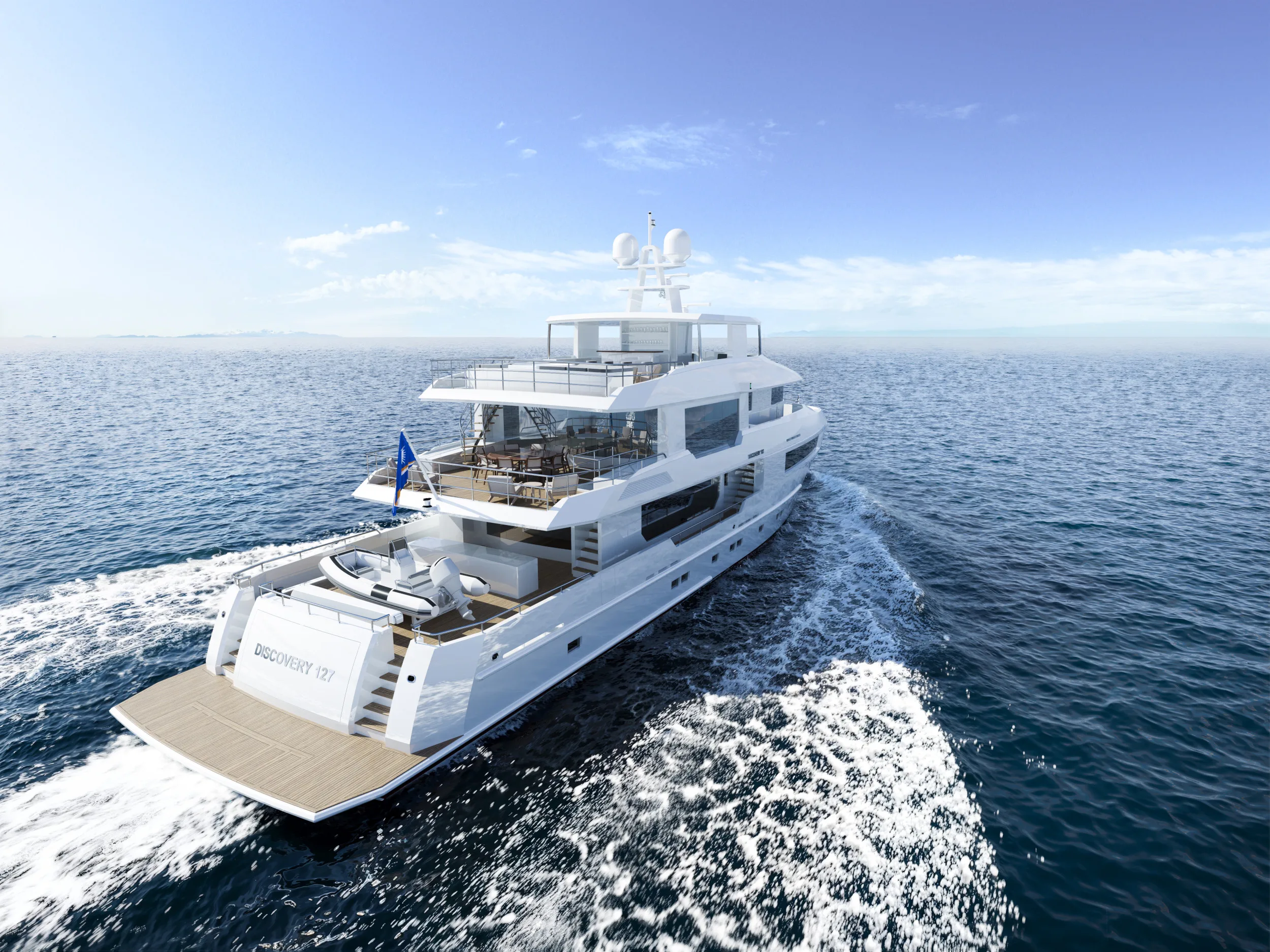Q&A with Naval Architect Nick Boksa
To develop the new Discovery Series Explorer Yacht line, Cheoy Lee Yachts collaborated with Nick Boksa, PE (professional engineer), president of Boksa Marine Design in Lithia, Florida.

A graduate of the U.S. Merchant Marine Academy and the University of Michigan with degrees in naval architecture and marine engineering, Nick draws on a wide range of experience in the commercial, military and pleasure marine sectors for his new and refit vessel designs. He has worked for Burger Boat Company, Davis Yachts, and oil-and-gas shipping company OSG America. As a licensed U.S. Coast Guard Third Assistant Engineer, he has managed vessel maintenance and operations for container ships and tankers. He has served as shipyard superintendent and fleet naval architect for ATB tugboats, tank barges and tank ships. He also has held design manager positions for refit, retrofit and new construction projects for pilot boats, crew boats, research vessels, passenger vessels, tugboats, tank barges in addition to production boats and megayachts.
In 2003, Nick founded Boksa Marine Design (BMD), which specializes in full-scale design and naval architecture for pleasure, commercial and military vessels from a blank sheet of paper. All Boksa boats are designed, engineered and built to exceed the operational requirements of their unique mission. Nick’s background working with commercial ships as well as yachts makes him the perfect partner for Cheoy Lee.
We sat down with Nick to learn more about his career and his vision for yacht design.
Q: What inspired you to become a naval architect?
A: I’ve been on boats my entire life. I grew up water skiing on Lake Michigan and when I was a teenager, my parents purchased a home in Florida. I would spend my entire summers living on the boats we owned there. It has been a lifelong love of mine, servicing and operating my family’s boats. I went to the Merchant Marine Academy with the goal of becoming a naval architect.
Q: Tell us some early influences that helped to shape your career.
A: My first real job out of school was with Burger Boat Company and my mentor there was Don O’Keefe. We would spend hours looking at photos of old black-and-white sailing vessels, the America’s Cup boats. Don would appreciate things about them you never would consider. This was in the mid-1990s and Burger hadn’t yet transitioned to electronic design, computers, CAD, that kind of thing. So, I had the benefit of working with Don, learning to do everything by hand, manual drafting, manual record-keeping, and building charts by hand. I ended up taking his hand drawings and putting them into CAD as we transitioned to that system, and then taking over and doing a lot of the design work myself. To this day, I still sketch some of my vessel designs on onion-skin paper first, just to set myself up for heights and dimensions before working on them with CAD.
One of my other early influences was reading articles about Tom Fexas – I remember the Cheoy Lee Midnight Lace series he designed in the 1980s. I have been aware of Cheoy Lee ever since I was a child, and so it feels natural to partner with the shipyard now.

Q: What sets Boksa Marine Design (BMD) apart from other firms in your industry?
A: Many of the people who work here with me also went to the Merchant Marine Academy or other merchant marine schools and we have spent quite a bit of time on ships, from climbing in the bilges and sewage tanks right on through rebuilding engines. So, we have a really good understanding of what it takes to manage, operate, and maintain vessels. My career has gone back and forth between commercial and yacht design and naval architecture, and I like to apply that robustness and that understanding of how to operate commercial vessels to our designs.
Q: What are some of the most significant projects you’ve worked on at BMD?
A: We often work behind the scenes for U.S. boat builders, providing naval architecture, structural and mechanical engineering support for their projects. I call it “backroom engineering” – it’s not glamorous, but it is necessary. Some of the shipyards we’ve done projects for have included Burger, Christensen, Derecktor, Egg Harbor, Lazzara, Newcastle, Nordhavn, and Broward, Palmer Johnson and Trinity, when they were around. One of the best-known yacht projects we have worked on is the 281-foot M/Y Cakewalk. We did a lot of small engineering and outfitting items for Derecktor on that project.
On the commercial side, we have had the opportunity to provide naval architecture and engineering work for shallow-draft barges, tugboats and a lot of conversion projects. One of our highlighted commercial new construction projects is the J.Arnold Witte, an 85-foot push tug for the lakes.
Q: How important is safety and regulatory compliance to your designs?
A: They are paramount for me and my team, with our background in commercial vessels. When I was working for the shipping company, we lost one of our tugboats and crew, so safety is always at the front of my mind. It’s extremely important to me not only to design a yacht that meets all the regulatory requirements, but also actually functions as a ship.
Q: What is your vision of the future of marine design, and how do you see BMD contributing to it?
A: I’ve been advocating for the last five or ten years for what I call “pocket superyachts” – explorer-style yachts in the mid-120-foot range. You can get a lot into a vessel like that and take it to every place in the world you can get to on a superyacht for less cost, and with less damage to the environment.
As for BMD, one thing I have done is to transition some of the ownership of the company to my employees in an effort to bring them a feeling of ownership in everything we do. I've seen how it has energized our company in that everybody is contributing in a lot of different ways now. So as far as BMD is concerned, I see it growing quite a lot in the next few years and hopefully contributing to the future of yachting for a long time to come.




